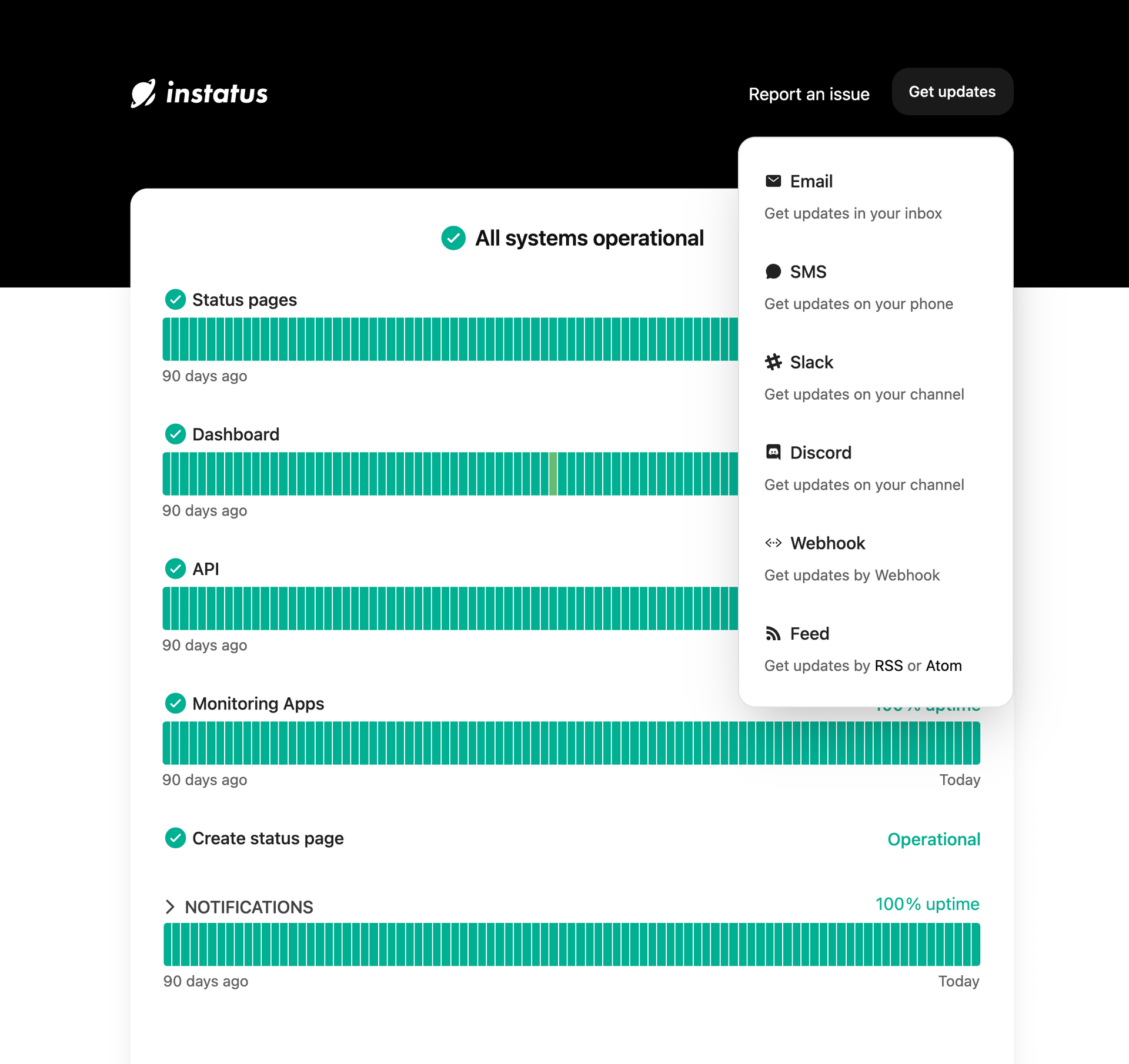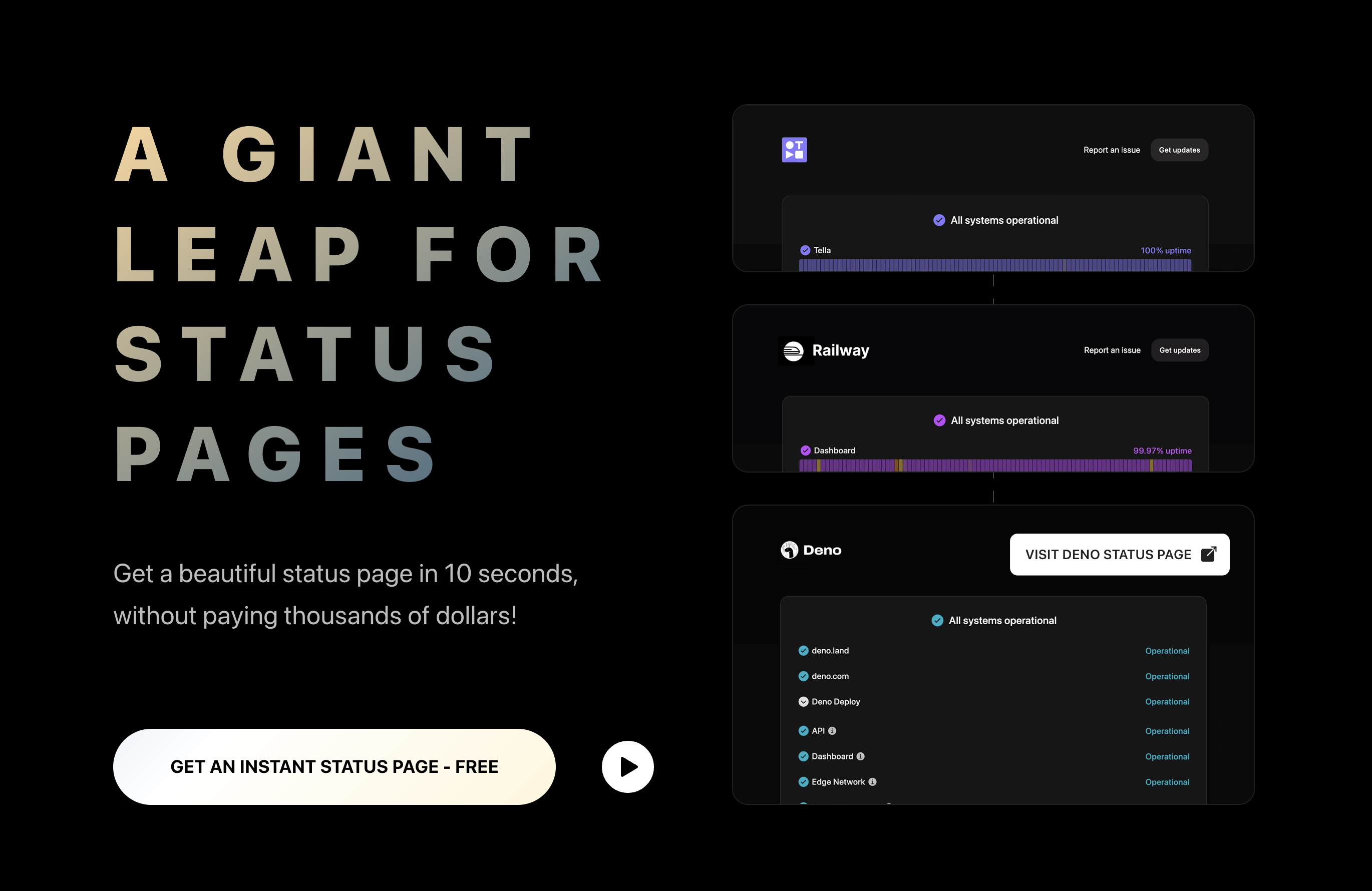2026's Top DevOps Trends to Look Out For

Hello, tech enthusiasts! We find ourselves smack-dab in the middle of our favorite ongoing 2026 saga – DevOps! It already has more plot twists than an M. Night Shyamalan movie, and the second half is showing no signs of slowing down.
Now that we're standing at the 2026 halfway point, we've got the inside scoop on what's coming up next. From exciting new tools that are as flashy as they are functional to intriguing strategies that’ll have you furrowing your brow and saying, "Why didn't I think of that?"
So, join us at Instatus as we check off the top trends rocking the 2026 DevOps universe. We'll explore what's making waves, why it matters, and how these trends are shaking up our DevOps narrative. Let’s get started!
The ABCs of DevOps trends
DevOps is a fundamental principle in the tech industry that emphasizes collaboration between development (Dev) and operations (Ops) teams. It's all about creating a tight-knit squad where everyone – developers, system admins, and the supporting cast – unites like tech peas in a tech pod.
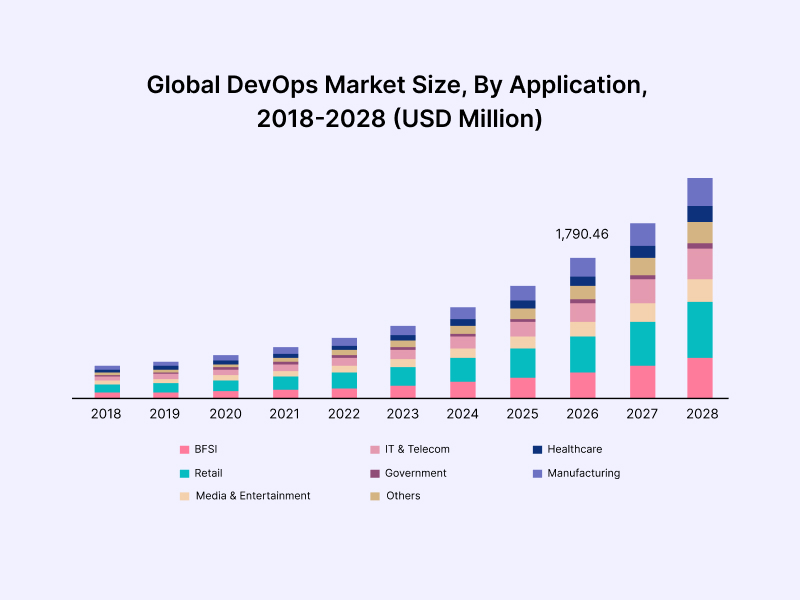
The goal? Swift, smooth, and sustainable delivery of software. And with 77% of organizations using DevOps to deploy software, just like The Flash, it’s showing no signs of slowing down (we apologize for the joke).
Now, if DevOps is a superhero team, DevOps trends are their superpowers. These trends are not just random fads that come and go. They’re well-thought-out strategies, tools, and practices that adapt to changing technology and business requirements.
Staying in step with the fast pace world of technology, these trends call for speedier software deployment, tighter security, and breezier scalability. Moreover, they’re shaped by the shifting landscapes of business needs and customer expectations, effectively helping DevOps teams stay ahead of the curve.
Unpacking the Significance of DevOps Trends
Having explored the realm of DevOps trends, it's clear that they're more than just industry buzzwords. These trends impact how the industry operates on a day-to-day basis. Let's take a closer look at the roles they play:
- Boost efficiency: The collaboration between development and operations teams elevates efficiency in developing, testing, and deploying software. Automation, an integral part of DevOps projects, reduces the reliance on manual tasks, allowing your workforce to concentrate on more challenging tasks. As a result, the DORA “2021 State of DevOps” report found that inclusive teams were less likely to experience burnout!
- Enhance security: One of the prominent DevOps trends is the use of security aspects in the initial stages of the development process, often referred to as shift-left security or DevSecOps.
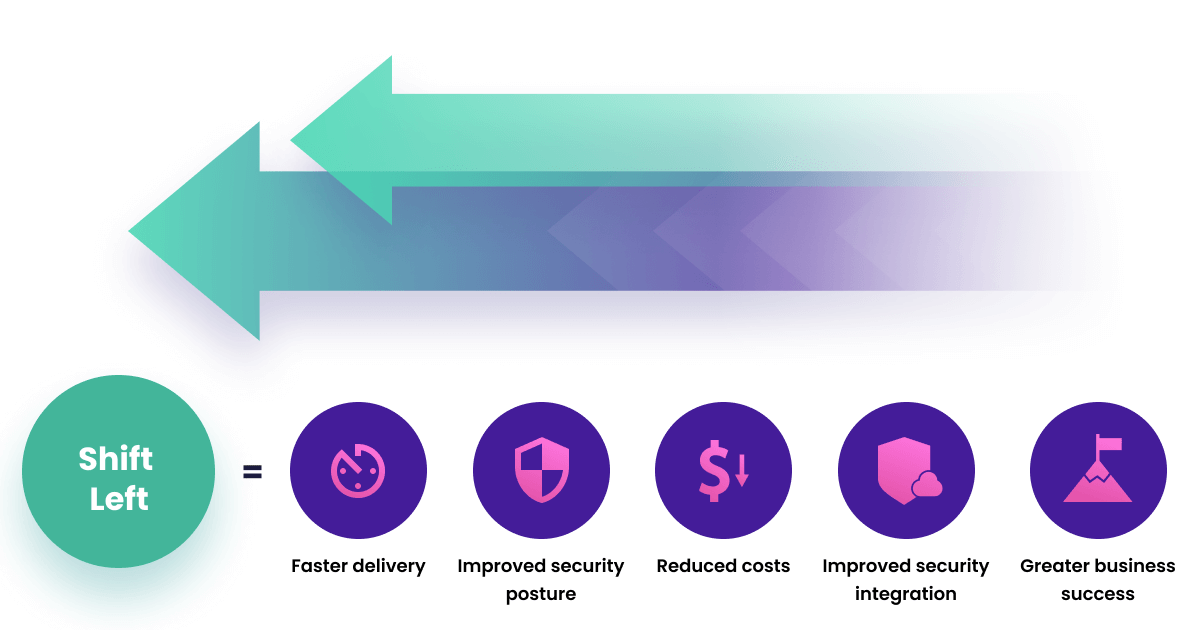
By doing this, security becomes a shared responsibility of the entire team, not just the security experts. It’s why 70% of security teams have shifted left in their security practices.
- Ease digital transformation: DevOps trends act as a roadmap for companies undergoing digital transformation. They provide businesses with the strategies, tools, and practices needed to transition into a digital-forward company. Research from IBM supports this, revealing that 85% of DevOps container users experienced a productivity boost thanks to reusing code across systems.
Adopting DevOps trends isn't merely about staying current in an evolving industry. By embracing trends, businesses can outpace competitors and leaders in their respective domains.
Top DevOps Trends and use cases for 2026
As we navigate through 2026, let’s uncover the top DevOps trends currently shaking things up in the tech world. Let’s dive in:
1. Low-code/no-code applications and platforms
In a bid to stay ahead of the competition, many organizations are changing to low-code/no-code platforms. This development style is revolutionizing the industry, ushering in increased agility and granting an edge in the fast-paced market.
Imagine being able to build software as easily as assembling Lego – that's what low-code/no-code platforms offer! Low-code tools are drawing in a new breed of “citizen developers” via intuitive and visual interfaces.
Developers and DevOps engineers leverage these platforms for their convenience, using features like drag-and-drop elements to streamline processes.
Use cases of low-code/no-code
- E-commerce apps
- Digital banking
- CRM systems
- Data collection
- Workflow management
As organizations move to these intuitive platforms, monitoring and communication tools go hand-in-hand for maintaining transparency and smooth operations. Instatus, a high-quality service that creates status pages, slots perfectly into this low-code/no-code trend.
Instatus informs users about your system status, incidents, or scheduled maintenance without writing a single line of code. With powerful integration capabilities and a user-friendly interface, Instatus amplifies trust while minimizing manual communication.
2. Serverless computing
In serverless computing, developers can create and run applications without the hassle of managing servers. It's like having an invisible helper doing the heavy lifting of DevOps infrastructure management.
In this setup, the cloud provider handles server management, scaling, and capacity planning, allowing DevOps teams to focus purely on writing great code. It provides flexibility and efficiency and allows for a faster go-to-market strategy.
Use cases of serverless computing
- Data transformation: Serverless functions can transform data on the fly. This is used frequently in ETL (Extract, Transform, Load) processes, where raw data is extracted to meet reporting needs and loaded into a data warehouse.
- Chatbots and virtual assistants: Serverless computing can power chatbots and virtual assistants, handling natural language processing while ensuring a more cost-effective approach.
3. DevSecOps
By integrating security practices from the initial stages of the development process, DevSecOps ensures that security is not an afterthought. This proactive measure increases system resilience, reduces the risk of security breaches, and ultimately builds more secure products.
DevSecOps embodies the principle of shifting left on security; it’s why 93% of security pros are cheerfully incorporating it into their DevOps ecosystem.

Use cases of DevSecOps
- Secure software development: By incorporating security early in the development pipeline, DevSecOps enables developers to write safer code. Static and Dynamic Application Security Testing (SAST and DAST) tools detect vulnerabilities before the software is deployed, reducing the mean time to detect (MTTD) vulnerabilities.
- Adobe: Adobe has embraced the DevSecOps approach throughout its development and operation processes, ensuring a more proactive security stance while reducing vulnerabilities in their applications.
4. Chaos engineering
There’s no doubt about it – chaos engineering is a life-saver! By intentionally introducing failures into systems, chaos engineering ensures they can withstand unexpected disruptions. It's like a fire drill for your applications, preparing them for worst-case scenarios.
The goal is to reveal weaknesses before they cause system-wide problems. And as systems become more complex, the need for such proactive testing grows.
Use cases of chaos engineering
- **Netflix introducing the Chaos Monkey tool: This tool randomly shuts down Netflix's production servers during business hours to test the resilience of their system. It allows Netflix to ensure the availability and durability of its services, even in the face of server failures. **
5. GitOps
The rising trend of GitOps reflects an advancement in the DevOps workflow, focusing on automation and control of infrastructure. Rooted in Kubernetes, GitOps provides a framework for developers and IT operations teams to manage clusters and deploy applications through Git – a well-established software control system.
Integrating Git workflows within operations and development teams facilitates smoother and more efficient processes, ultimately playing a significant role in enhancing automation, efficiency, and security.
Use cases for GitOps
- Static websites: When a developer updates their website's content using GitOps practices, an automatic build process generates a new version of the website. These changes can be easily tracked and rolled back if necessary.
6. AI and machine learning
AI and machine learning (ML) find patterns and solve problems faster than humans. When integrated with DevOps, they can analyze vast amounts of data to identify models, predict issues, and automate solutions.
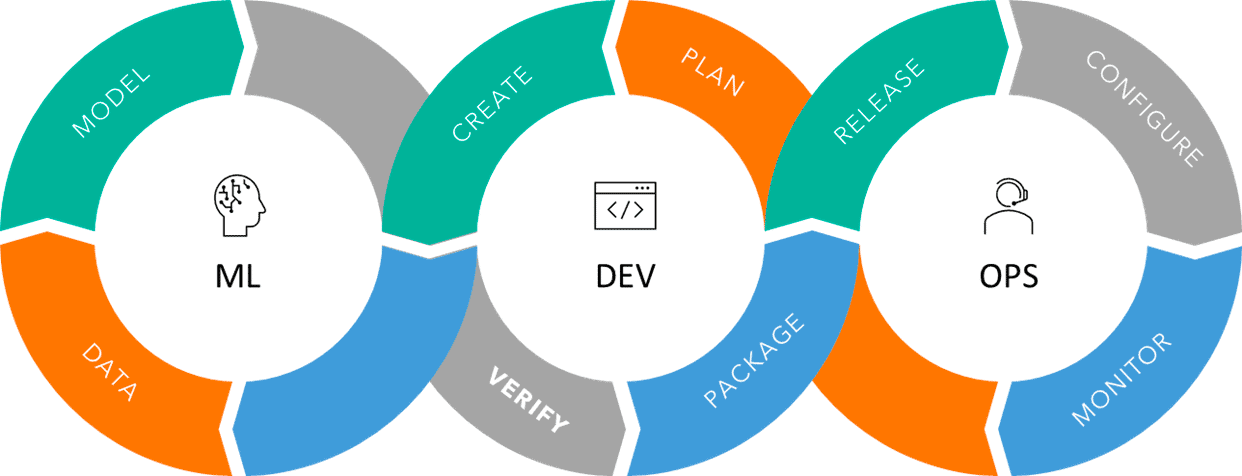
This helps in proactive problem-solving, increasing efficiency, reducing errors, and improving the overall quality of the software.
Use cases for AI and machine learning
- Automated testing: Machine-learning algorithms can generate and execute test cases, improving the accuracy and speed of software testing.
- Predictive analysis: AI can analyze historical data from previous development cycles and use it to predict future outcomes, such as identifying the most likely points of failure or estimating the time it would take to complete a task.
7. Infrastructure as code
Infrastructure as Code (IAC) simplifies managing and setting up technology infrastructure. Instead of a manual approach, this method allows teams to automate the provisioning and management of servers, eliminating human configuration. It brings consistency, repeatability, and scalability, enabling faster and more reliable deployments.
Use cases for infrastructure as code
- Cloud infrastructure setup: IAC can automate a complete DevOps cloud infrastructure on platforms such as AWS, Google Cloud, and Azure. This includes setting up servers, storage, and networking components.
8. Automation
Automation in DevOps minimizes human intervention, reducing errors and speeding up processes from coding to deployment. This leads to more frequent and reliable releases, improved efficiency, and reduced costs.
Use cases for automation
- Employee onboarding: The process of setting up new employees with onboarding resources is a time-consuming task. Automating this process ensures every new employee starts with the same consistent setup, reducing potential hiccups.
- Continuous Integration/Continuous Delivery (CI/CD): Automation is crucial in CI/CD pipelines. It allows for seamless code integration, testing, and deployment, minimizing the chance of human error and speeding up the delivery process.
Stay ahead of the latest DevOps trends
DevOps trends reflect the future of efficient and secure software development, shaping the way teams collaborate and businesses thrive. With this in mind, remember to welcome these transformative trends with open arms and embrace the change.
As you explore these DevOps trends, utilize tools like Instatus to ease your journey. Designed for developers and operations teams, Instatus lets you effortlessly create and manage status pages, boosting winning communication with your team and users.
Get your free status page today!
Get ready for downtime
Monitor your services
Fix incidents with your team
Share your status with customers

